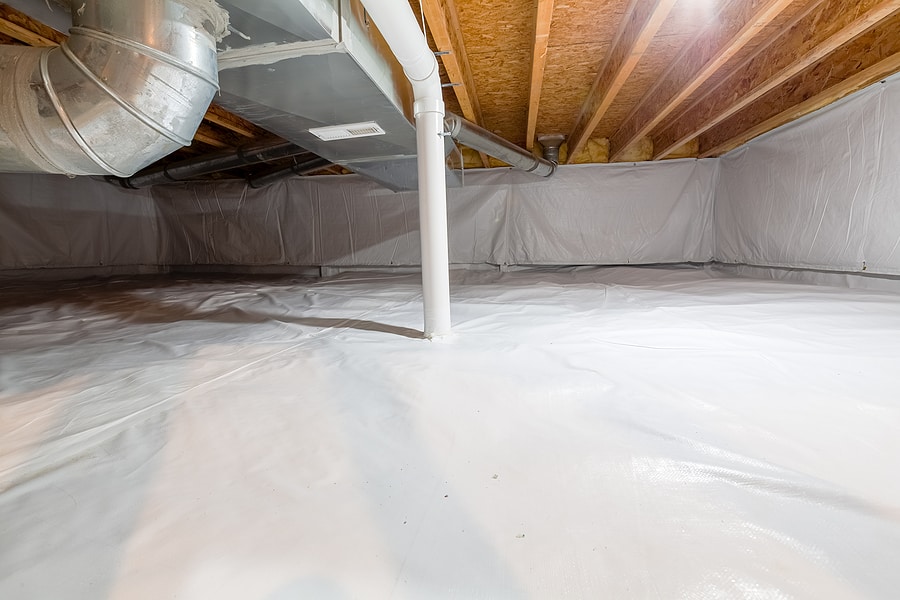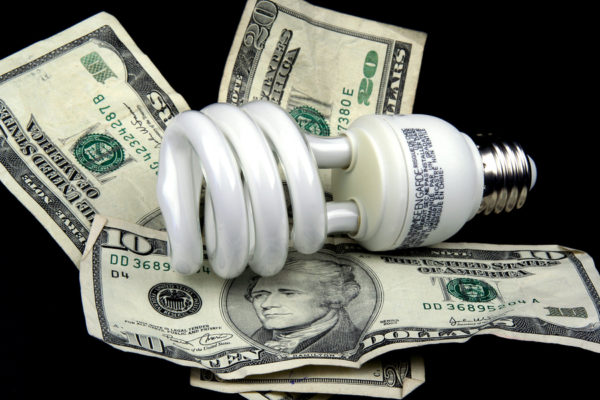READY TO GET STARTED?
REQUEST A FREE ESTIMATE
Fill out the form below or call (888) 466-7849 for a free, no-obligation estimate.

We all know that during the summer, attic insulation works as a heat reflector from the sun. But how does it work in the wintertime? If your attic isn’t well insulated, then the rising heat won’t stay inside the home, resulting in major energy loss for your home. Here are some tips when it comes to getting your attic insulated:
Over time attic insulation can begin to appear damaged. It could be from old age, excess moisture, or a wildlife infestation. If you think your attic’s insulation is not working like it needs to, then your best bet is to invest in replacing it. A good rule of thumb when determining it’s time to replace is noticing insulation that looks out of place, as this can cause your energy bill to spike.
Air leaks can make your insulation not as efficient as it needs to be. When insulation is installed, it’s important to ensure your attic is sealed correctly. The tiniest hole will cause your HVAC system to work overtime, causing an increase in your energy bills. The best way to discover any holes in your attic is to inspect them during the daytime when the sun will shine through them. Be sure to mend these holes with caulk to lessen the chance of moisture or critters getting in.
A home energy audit can help you detect places other than your attic that need additional insulation. It should be the first step towards getting your home on the right path to maximum energy efficiency.
Need to get your home insulated? Give our team a call and receive a free inspection today!

A moisture barrier is a plastic liner that covers the dirt in your crawlspace. These barriers are used to block vapors and moisture in the soil from entering your crawlspace. But is it necessary to install a moisture barrier under your home? While that decision remains a personal one for you as a homeowner, there are several benefits to moisture barriers.
Moisture in your crawlspace can affect the temperature inside your home. As your HVAC unit or furnace runs longer to help maintain the temperature inside, it uses more electricity which, in turn, increases your electricity bill. This also puts additional strain on the HVAC unit, causing them to wear out faster and need costly repairs and/or replacement. A moisture barrier acts as a sealant, controlling the moisture levels and easing the strain of your HVAC system, making your home more energy efficient and saving you money on your energy bills.
High moisture levels in your crawlspace provide the ideal environment for mold and mildew growth. Mold and mildew in your air system can be detrimental to your and your family’s health. Mold can also cause significant damage to your home. Installing a moisture barrier greatly reduces these moisture levels, preventing mold and mildew from forming. Mold and mildew are often the cause of foul odors in your home, as well. A moisture barrier can also help eliminate these stale, musty odors from your home.
Moisture that gets into your crawlspace affects the temperature in your home. It can make your home too hot, too cold, too stuffy, or too dry depending on the weather, the season, and other factors. The moisture either absorbs the warmth from your house or keeps it from escaping. In turn, this causes your HVAC unit or furnace to run too long trying to maintain a steady temperature indoors. Installing a moisture barrier seals those spaces and keeps the moisture out of your crawlspace, helping to regulate the temperature inside.
Your home’s foundation is vital to its structure and soundness. Moisture in your crawlspace can lead to wood rot, especially on joists and beams. Rotting wood can lead to significant structural damage to your home which can, in turn, stick you with a huge repair bill. Moisture barrier installation reduces the amount of moisture in your crawlspace which helps prevent wood rot, protecting the structural integrity of your home.
Your unsealed crawlspace is an open invitation to pests and wildlife in search of shelter, food, and water. Once inside, these critters can cause significant damage to your home and your health. Rodents and other wildlife can chew through wood and electrical wires. Roaches and other insects can use the crawlspace to gain access to your home, posing potential health risks to you and your family. Installing a moisture barrier completely closes off your crawlspace, eliminating this entry point for pests into your home.
How do you know if you have a problem within your crawlspace? Some signs of crawlspace trouble include:
If you are interested in moisture barriers or crawlspace enclosure, contact a reputable company for more information.

Even though the calendar says September, the thermometer still reads summer! Summer is the time of year when we see a surge in our energy costs and utility bills. As the temperatures increase outside, we spend more time inside. Kids are home from school all day running the air conditioner, using electronics and appliances, and leaving the lights on. There is also a bigger gap between the temperature outside and the temperature inside our homes – causing our air conditioning units to work harder to keep our homes cool. Summer is also a time to utilize swimming pools to have fun and cool off. Electric pool pumps, however, use a lot of energy. In fact, they can add an average of $80-90 per month to your energy bill if they run 24 hours a day. As the demand for energy increases and the supply of energy decreases, the market price of energy will inevitably go up. This helps explain why our energy bills are so high in the summer months.
So what can you do to help stay ahead of this surge in energy costs? Two options available are TAP insulation and Complete Crawlspace Enclosure.
TAP or thermal acoustical pest control insulation can help protect your home and your wallet from those increasing summer energy bills. TAP insulation:
Complete crawlspace is an enclosed crawlspace solution that includes high quality vapor liner, taped seams, sealed foundation vents, and mechanical drying. Complete Crawlspace provides you with:
Northwest wants to make sure your house is running as efficiently as possible. Click for your Free TAP Insulation estimate or your Free Complete Crawlspace estimate or by giving us a call.

Even though we’re well into the winter season, it’s never too late to weatherproof your home. These easy fixes will not only seal up your home and keep it nice and warm, they will also help save you some money on your energy bills this year. Check out these simple winter weatherproofing tips so you’ll be prepared just in case the groundhog DOES see his shadow this year!
Check your doors and windows to make sure they are in good repair. Insulate your doors and windows with weatherstripping. Use transparent weather sealant tape for any areas where the weatherstripping will be applied directly to the door or window. This tape can also be used to temporarily seal any cracked windows until you can permanently replace them. Use door sweeps on the bottoms of exterior doors to keep cold air from coming in. You can install them with nails or with adhesive.
Attics and crawlspaces are notoriously cold areas of your home. Thermal accoustical pest control (TAP) insulation is an energy star rated attic insulation that provides several benefits to your home. TAP eases the burden on your heating and cooling systems, making them more efficient and keeping the temperature in your home more consistent throughout the year. TAP also leads to a 20-38% savings on your energy bills AND protects your home against pests including roaches and ants. Finally, TAP is treated with a fire retardant that limits the spread of fire in your home.
Complete CrawlSpace enclosure is another way to weatherproof your home. Enclosing your crawlspace with Complete CrawlSpace increases energy efficiency, prevents mold growth, and completely closes off your crawlspace to pests. This can also save you up to 18% on your energy bills each year.
Most garages aren’t insulated which makes them very chilly spaces in the winter. Install weather sealing strips on the bottom of your garage door. These strips not only keep out cold air but also keep out rain and pests as well.
Outlets and switches on the exterior walls of your home can be a big source of cold air. One solution is to install foam outlet and switch sealers. These can be installed by simply turning off the power, removing the outlet or switch cover, applying the foam sealers, and reinstalling the covers.
Hardwood and tile floors can be especially cold in the winter. Curtains and rugs can make a big difference when it comes to heating your home. if you have drafty windows, hang some heavy curtains to keep the cold air out. Use area rugs on hardwood floors and in bathrooms with tile floors to help keep them warm.
Air conditioning units in walls and windows give a direct path for cold air into your home. One solution is to install a heavy duty polyethylene and vinyl cover that fits around the outside of the unit. You can also wrap the inside grill with plastic sheeting and double sided tape. Consider installing a programmable thermostat which will automate your interior temperature. This can save you up to $200 per year in heating and cooling costs.
Insulate your hot water heater with a water heater insulating blanket. This saves energy by reducing heat that is lost through the sides of the hot water heater by 25-40%. This reduction in heat loss can also lead to savings on your energy bills.